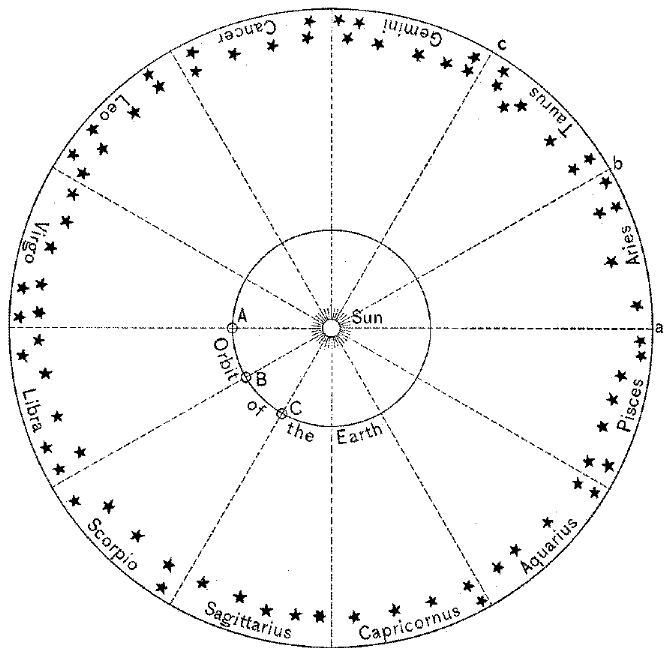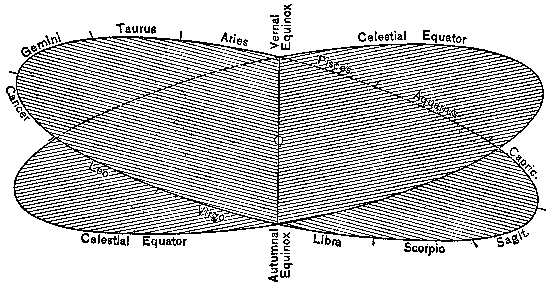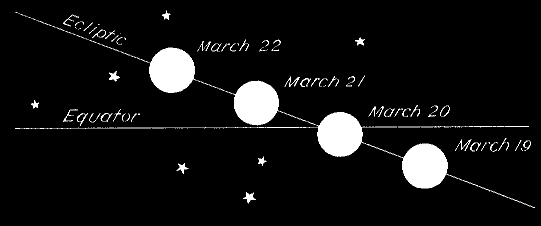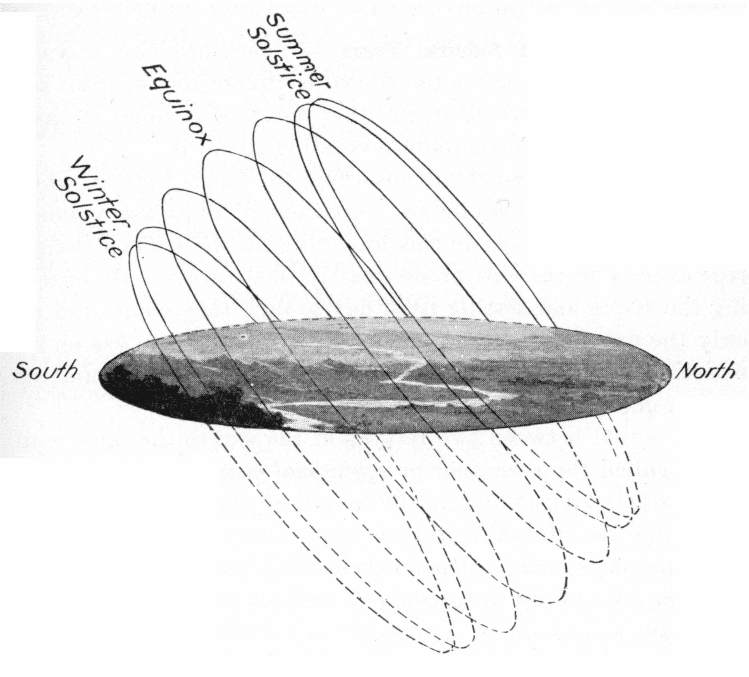 |
 |
Let us study figure 18, which shows the earth’s orbit, ABC, with the sun in the center. Far outside the orbit lie the stars. To make a figure on the right scale, we should have to place the stars several miles away; as we cannot do this, we represent their positions as in the figure.
Now suppose we could fly a few thousand miles above the earth and accompany it in its course round the sun. Then, looking down, we should see the earth turning on its axis, and bringing its oceans and continents into view, one after the other. Looking at the stars, we should see them at rest. They would neither rise nor set, nor even change their direction by any quantity we could perceive.
Next, let us see how it will be with the sun. When the earth is at the point A, we shall see the sun as if it were among the stars at the point a. A month later when the earth has got to the point B, the sun will appear among the stars at b. In another month, with the earth at C, the sun will be seen as if at c, and so on through the year. As the earth goes through its revolution round the sun, the sun appears to move around in a circle among the stars, until the earth gets back to the position A, when the sun will again appear in the position a. Hence: --
The sun appears to us to describe a complete circle around the celestial sphere, among the stars, every year.
The circle thus described by the sun on the celestial sphere is called the ecliptic.
The zodiac is an imaginary belt in the heavens, extending 8° on each side of the ecliptic, and passing all round the celestial sphere as the ecliptic does. The ecliptic is its central line.
If the axis of the earth were perpendicular to the ecliptic, the plane of the earth’s equator would always pass through the sun, and the sun would always be seen in the celestial equator. Because of the obliquity of the ecliptic, already described, the ecliptic is inclined to the equator by an angle of 23½° , cutting it at two points called the Vernal and Autumnal equinoxes, as shown in figure 19.
 |
To make this clear, we show in figure 20 how, if we could see the stars around the sun, and the ecliptic and equator marked on the celestial sphere, we should, day by day, see the sun moving from west toward east, among the stars.
 |
In very ancient times men mapped out the apparent course of the sun round the celestial sphere, as shown in figure 19. They divided it into twelve parts, each 30° length, and named each part after the constellation in which the sun would have been seen had the stars been visible. Theses parts were called signs of the zodiac. The sun enters a sign about the 21st day of each month. The names of the signs and the months when the sun enters each are as follows: --
| Aries, The Ram | March |
| Taurus, The Bull | April |
| Gemini, The Twins | May |
| Cancer, The Crab | June |
| Leo, The Lion | July |
| Virgo, The Virgin | August |
| Libra, The Balance | September |
| Scorpio, The Scorpion | October |
| Sagittarius, The Archer | November |
| Capricornus, The Goat | December |
| Aquarius, The Water Bearer | January |
| Pisces, The Fishes | February |
When the sun is at the Vernal Equinox, it appears in the celestial equator, rises exactly east, and sets exactly west.
In figure 19 we see that during the six months the sun is passing from Aries to Virgo, it appears north of the celestial equator. It is therefore in north declination; it rises north of east and sets north of west. At this time, in the northern hemisphere, the days are longer than the nights. See the apparent diurnal course of the sun as shown in figure 22.
When the sun passes from Gemini into Cancer, it has reached its greatest north declination, and now begins to move south again. This point is called the Summer Solstice.
When the sun reaches Libra, it again crosses the equator toward the south. This point is called the Autumnal Equinox.
During the remaining six months, while the sun is passing from Libra to Pisces, it is in south declination; it rises south of east and sets south of west. In the northern hemisphere the nights are then longer than the days.
When the sun passes from Sagittarius into Capricornus it has reached its greatest south declination, and begins to return toward the equator. This point is called the Winter Solstice.
 |